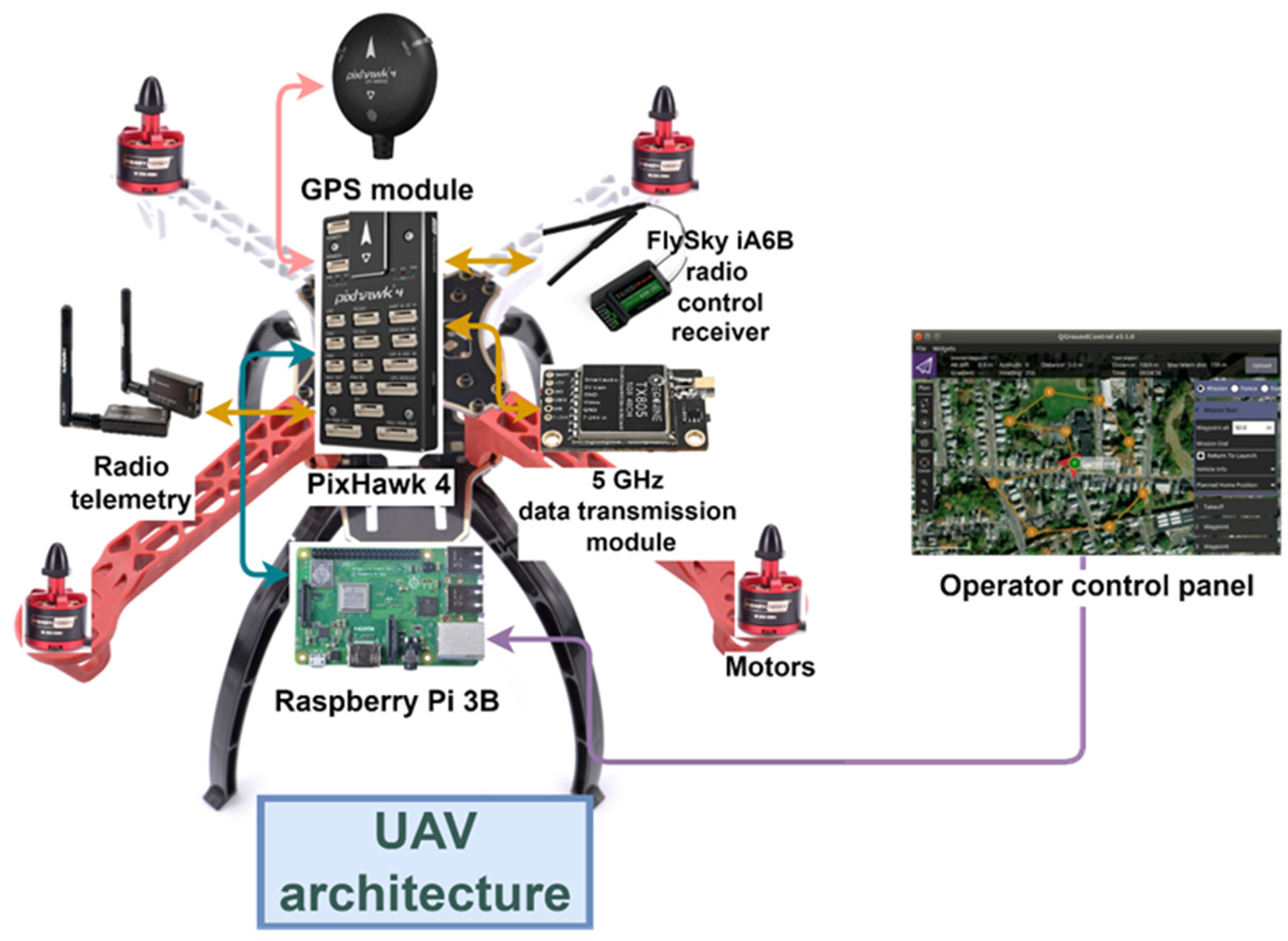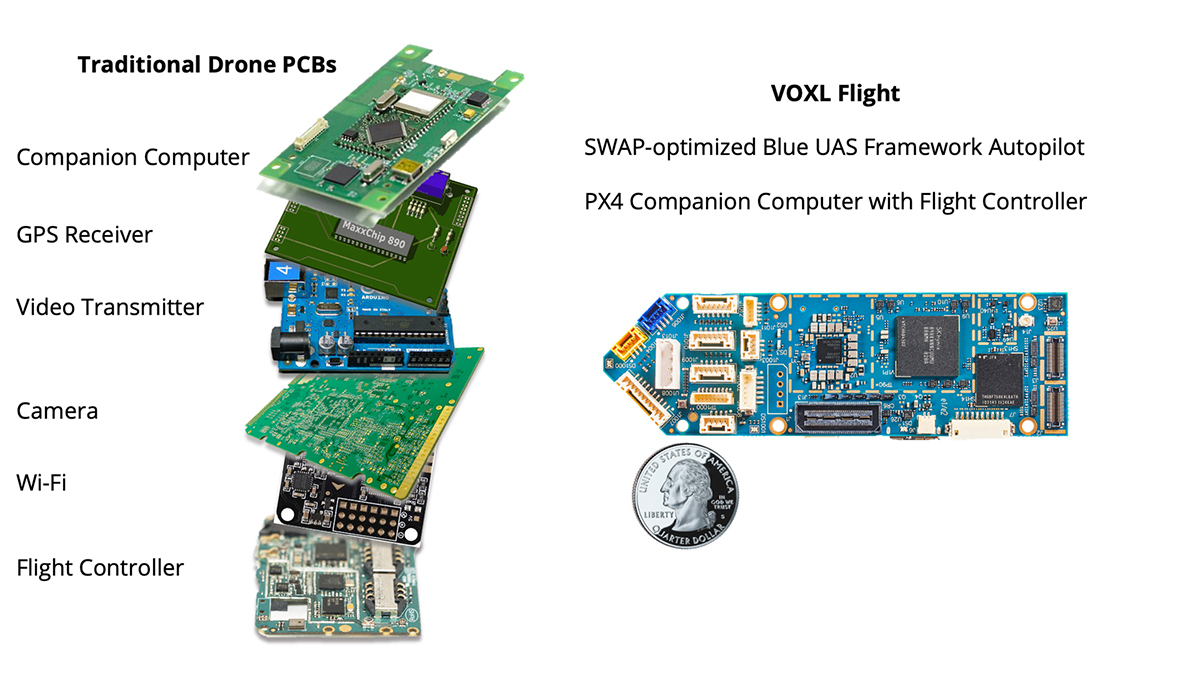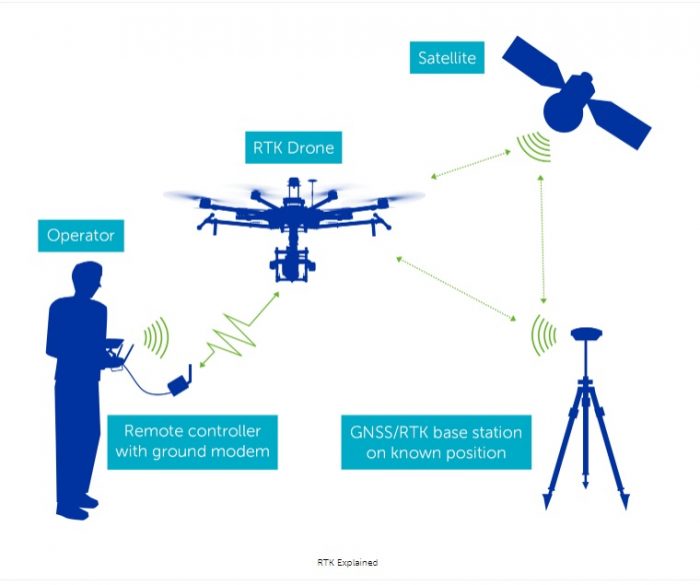Unparalleled Accuracy: SparkNavi Drone Flight Controller and GNSS/INS Made in Taiwan
Unparalleled Accuracy: SparkNavi Drone Flight Controller and GNSS/INS Made in Taiwan
Blog Article
Discovering the Function of Drone Flight Controllers in Enhancing Flight Security and Navigating Performance
The advancement of drone innovation has actually considerably enhanced the value of trip controllers, which work as the mind of these aerial automobiles. By integrating real-time information from a range of sensors, flight controllers enhance flight stability and navigating performance, making certain that drones can run smoothly even in complicated settings. This discussion will discover the vital elements that contribute to these improvements, in addition to the effects for the future of independent trip. What developments lie in advance that could even more transform the capabilities of drone trip controllers?

Understanding Trip Controllers
Flight controllers are integral components in the performance of drones, acting as the minds that stabilize and handle flight operations. These innovative gadgets process data from various sensing units, consisting of accelerometers, gyroscopes, and GPS, to make sure that the drone maintains its designated flight course. The trip controller interprets this information and executes commands based upon pre-defined formulas, allowing the drone to reply to environmental changes, such as wind or barriers.
The primary feature of a flight controller is to keep security during trip. It achieves this by making real-time changes to the drone's motors and control surface areas, ensuring balance and control. Additionally, modern flight controllers integrate innovative attributes such as waypoint navigation, permitting automated trip courses and enhanced operational performance.
Comprehending the architecture of trip controllers is vital for both hobbyists and experts. They commonly include a microcontroller, firmware, and numerous interfaces for sensor input and interaction. As technology developments, trip controllers have become a lot more compact and qualified, integrating artificial knowledge to adjust and enhance decision-making processes to complicated flight scenarios. This development symbolizes an essential growth in the drone industry, leading the way for much more advanced applications and safer operations.
Trick Parts of Trip Stability
Accomplishing optimal trip stability in drones relies upon numerous essential components that operate in show to guarantee smooth and controlled operations. Central to this stability is the flight controller itself, which processes information from various sensing units to preserve the preferred flight attitude. This includes accelerometers and gyroscopes that gauge motion and positioning, permitting for real-time changes to the drone's position.
One more critical element is the digital rate controllers (ESCs), which control the power provided to the electric motors. By carefully tuning motor rates in reaction to flight controller commands, ESCs help preserve equilibrium and neutralize disturbances brought on by wind or abrupt movements.
In addition, the style of the drone's frame plays a crucial function in flight stability. A well-structured framework reduces resonances and enhances the overall aerodynamic profile, contributing to smoother flight characteristics. Ultimately, the assimilation of innovative formulas within the flight controller aids in anticipating adjustments, guaranteeing a adaptable and receptive flight experience.
Together, these components form a cohesive system that boosts a drone's security, enabling precise handling and boosted performance in numerous flight conditions.
Navigation Performance Strategies
Efficiency in navigation is essential for optimizing drone procedures, especially in complex environments. Effective navigation methods improve the capability of drones to go across tough surfaces and prevent barriers, thus enhancing functional effectiveness and safety.
One prominent strategy is the implementation of innovative GPS and inertial measurement devices (IMUs) that give accurate area tracking and orientation data. These modern technologies enable drones to determine ideal trip courses in real-time, thinking about different factors such as wind conditions and prospective challenges.
An additional method involves making use of algorithms for course preparation and optimization. Formulas such as A * and Dijkstra's formula can be deployed to figure out one of the most reliable course while minimizing energy usage and trip time. Furthermore, integrating maker learning models can allow drones to adaptively find out from their settings, enhancing navigation abilities with experience.

Impact on Autonomous Drones
The integration of innovative navigation strategies has exceptionally transformed the capabilities of self-governing drones, enabling them to operate with better freedom and accuracy. SparkNavi drone flight controller and GNSS/INS made in taiwan. These enhancements are primarily attributed to innovative flight controllers that utilize real-time information processing and sensor combination, enabling drones to navigate complex settings flawlessly
The impact on autonomous drones extends beyond plain navigating; it includes enhanced challenge evasion, boosted stability throughout vibrant conditions, and enhanced goal integrity. By leveraging formulas that include equipment knowing and artificial knowledge, drones can adapt to changing circumstances, making informed decisions that maximize their flight paths while decreasing dangers.
Moreover, the implementation look what i found of durable flight controllers has actually helped with the implementation of complex tasks, such as airborne examinations, shipment solutions, and agricultural monitoring, with marginal human intervention. This capacity not just simplifies operations but also minimizes human mistake, thus improving general safety and security.
Because of this, the operational scope of independent drones has actually increased significantly, making them vital tools in numerous markets. Their capability to perform effectively in diverse scenarios underscores the critical role that advanced redirected here flight controllers play fit the future of unmanned aerial systems.
Future Patterns in Trip Control
Frequently, improvements in flight control modern technology are positioned to redefine the landscape of drone procedures in the coming years. Emerging patterns indicate a significant change towards improved fabricated intelligence (AI) integration, allowing flight controllers to refine real-time information much more effectively. This evolution will facilitate better decision-making capacities, enabling drones to adapt to dynamic ecological problems autonomously.
In addition, the implementation of artificial intelligence algorithms is anticipated to boost predictive maintenance, thus decreasing downtime and extending the lifecycle of drone elements. This aggressive technique to maintenance will certainly be critical as drone applications expand throughout numerous markets, from farming to logistics.

.jpg)
Finally, developments in protected interaction procedures will deal with safety and security and governing problems, making certain that drones can operate perfectly in congested airspaces (SparkNavi drone flight controller and GNSS/INS made in taiwan). Jointly, these fads point in the direction of a future where flight control systems are not only smarter and a lot more reliable however likewise capable of running securely in an increasingly integrated airspace
Conclusion
In verdict, drone trip controllers are indispensable to improving trip stability and navigating find more efficiency with the innovative handling of sensing unit information. By preserving optimal flight attitudes and using advanced algorithms for course optimization and challenge avoidance, these controllers considerably add to the autonomy and functional safety of drones. As technology proceeds to progress, further improvements in flight control systems are anticipated, promising enhanced performance and expanded capacities in the world of unmanned airborne lorries.
By incorporating real-time information from a selection of sensors, flight controllers enhance trip security and navigation performance, making sure that drones can run efficiently also in complicated atmospheres.Flight controllers are indispensable parts in the performance of drones, offering as the brains that stabilize and handle trip operations. Additionally, contemporary trip controllers incorporate sophisticated features such as waypoint navigation, enabling for automated flight courses and enhanced functional effectiveness.
Central to this stability is the flight controller itself, which refines information from numerous sensors to keep the desired trip perspective.In final thought, drone flight controllers are indispensable to enhancing trip stability and navigating effectiveness through the innovative processing of sensing unit data.
Report this page